This Low Calorie Pesto is a great way to make homemade pesto sauce with lots of flavor. This pesto sauce recipe is made my favorite way - with fresh spinach, basil, and pine nuts blended with just enough parmesan, garlic, and olive oil for flavor.

Jump to:
Check out my Pineapple Habanero Sauce and my Cilantro Chimichurri Sauce for more amazing sauces!
Add spoonfuls of pesto to zucchini noodles, spaghetti squash, your favorite noodles, and even chicken breast.
This low calorie pesto is made without a lot of oil unlike store-bought pesto with extra calories. You can adjust the ingredients to make it your own!

Why You'll Love This Recipe
- This homemade basil pesto is ready in minutes giving your pesto pasta a unique flavor.
- It's made with simple ingredients found at the grocery store.
- This basil pesto recipe is just as amazing as traditional pesto sauce and will become your favorite recipe.
Ingredients You'll Need
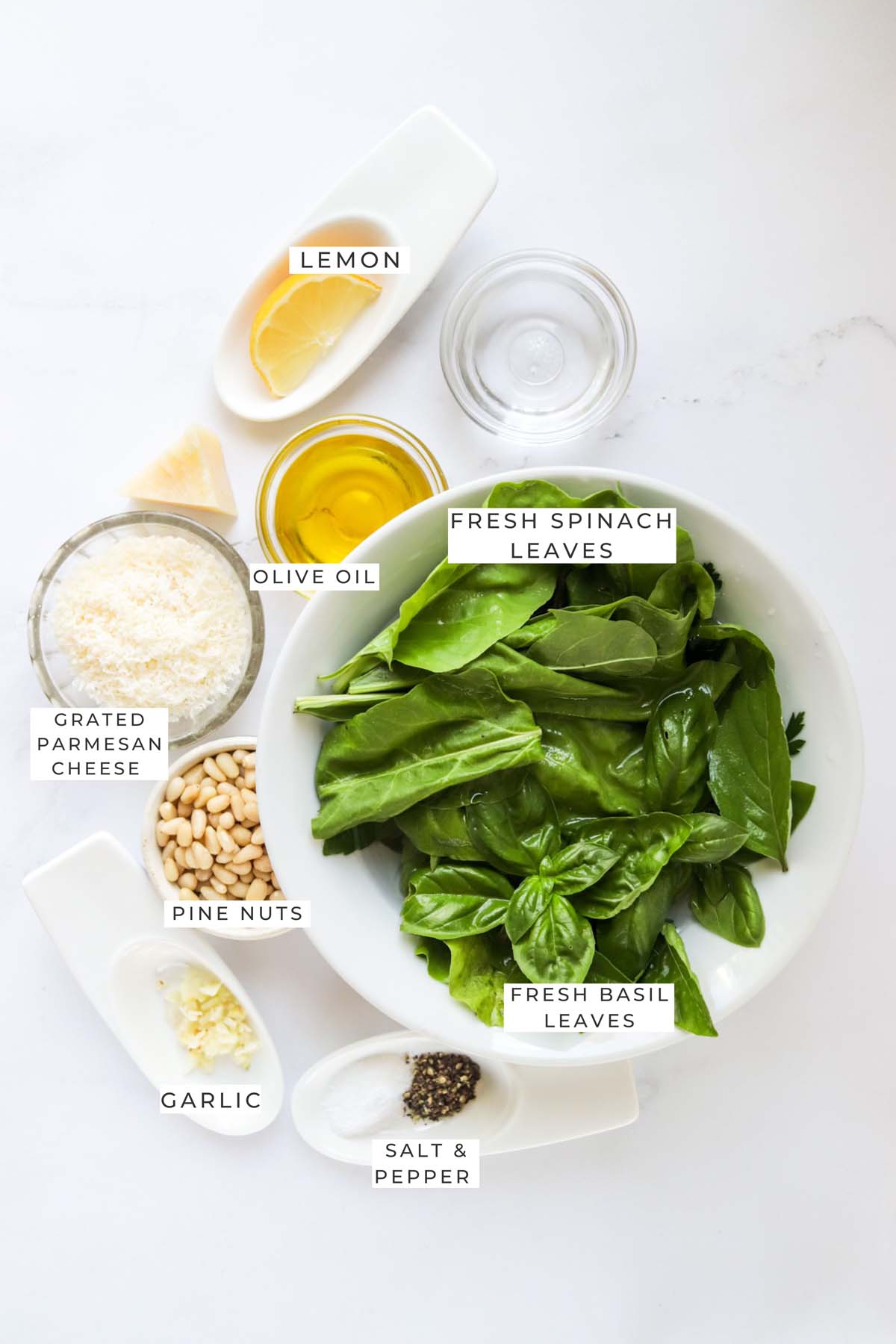
- Fresh Spinach Leaves: Adds a vibrant green color to the pesto.
- Fresh Basil Leaves: Contributes a delightful aroma and a hint of sweetness.
- Pine Nuts: Brings a rich, nutty flavor. If you have a nut allergy, you can leave these out.
- Grated Parmesan Cheese: Adds a creamy and savory element. Pecorino Romano is also great.
- Minced Garlic: Garlic cloves infuse the pesto with its signature flavor.
- Lemon Juice: Adds a refreshing zing and helps balance the flavors.
- Water: Helps achieve the desired consistency.
- Olive Oil: Contributes richness and a smooth texture. This recipe uses less oil than a classic pesto, but you can leave it out for an oil-free pesto.
- Salt & Pepper: Enhances the overall taste.
Step-By-Step Instructions
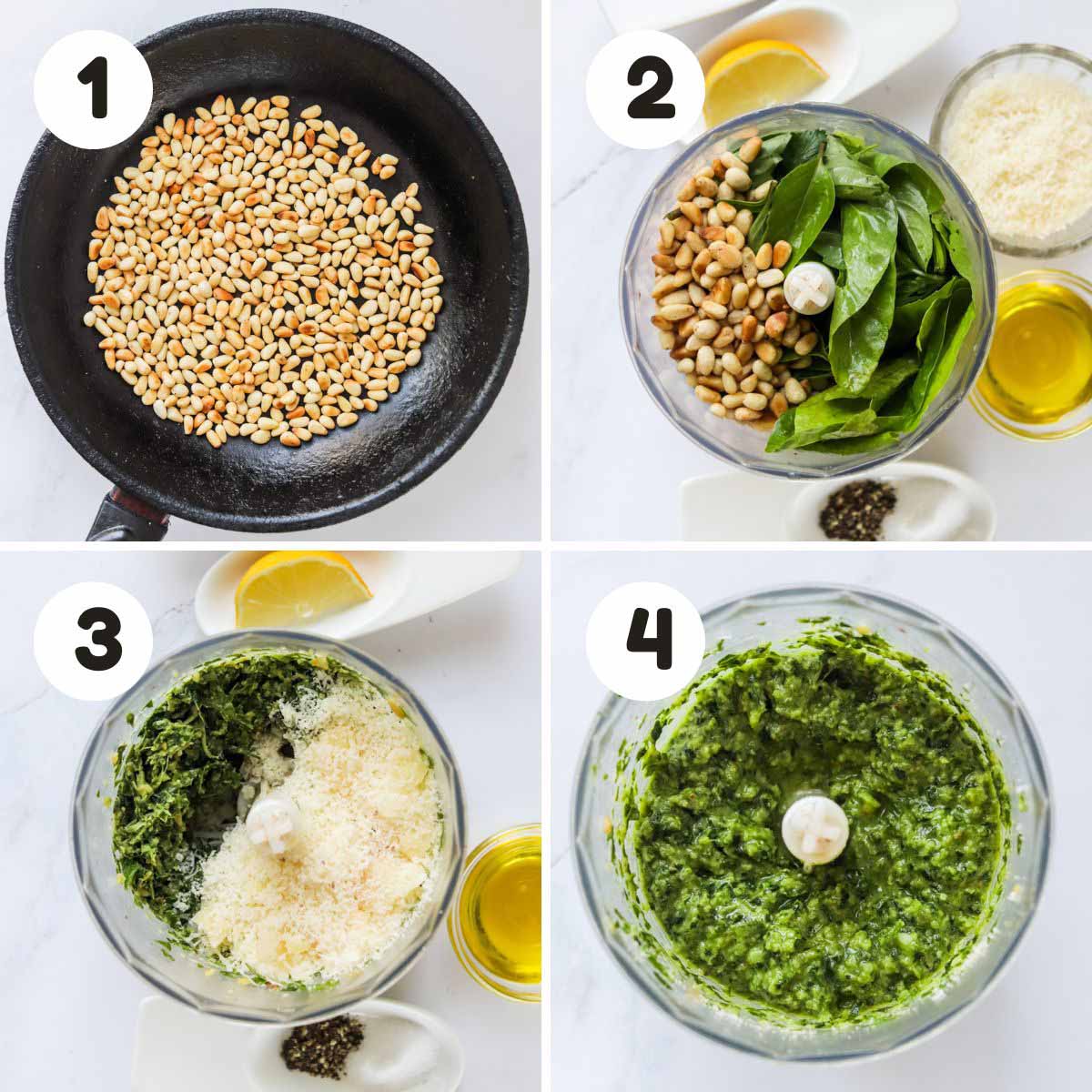
Step 1: Wash the spinach and basil leaves thoroughly and pat them dry with a paper towel.
Step 2: In a dry skillet over medium-low heat, toast the pine nuts until they are lightly golden. Be careful not to burn them; stir frequently. Remove from heat and set aside to cool.
Step 3: In a food processor or blender, combine the spinach, basil, toasted pine nuts, grated parmesan cheese, minced garlic, and lemon juice. Pulse a few times to start breaking down the ingredients.
Step 4: While the blender or food processor is running, slowly drizzle in the water and olive oil.
Step 5: Add a pinch of salt and a dash of black pepper. Remember that the Parmesan cheese already adds some saltiness, so adjust to your taste.
Step 6: Continue blending until the mixture reaches your desired consistency. If you prefer a smoother pesto, blend for a longer time. If you like it chunkier, pulse a few more times.
NOTE: You can print the FULL recipe with all ingredients & detailed instructions below!

Expert Tips
- Use the freshest ingredients available. Fresh basil from basil plants and spinach will give a brighter and more vibrant pesto.
- After blending, taste the pesto and adjust the seasoning as needed. You can add different herbs as well.
- Pesto is flavorful, so you don't need a large amount to add a punch of taste to your dishes.
Variations
- Nutritional Yeast: Instead of or in addition to parmesan cheese, you can use nutritional yeast. It provides a cheesy flavor without the added calories.
- Reduced Olive Oil: Decrease the amount of olive oil and use water or vegetable broth to thin out the pesto. This reduces calories while maintaining flavor.
- Roasted Garlic: Roasting garlic before adding it to the pesto will mellow its flavor and give it a sweeter taste.
Storing & Freezing
Storing: Transfer the pesto to an airtight mason jar. To prevent browning, place a piece of plastic wrap directly on the surface of the pesto. Store the container in the refrigerator for about 5-7 days.
Freezing: Divide the pesto into small containers that you're likely to use in one go. Ice cube trays work well as does an airtight container. Once the portions are solid, you can transfer them to a freezer bag for up to 3-6 months.
Recipe FAQ's
Yes, you can make nut-free pesto by omitting the pine nuts or substituting them with seeds like sunflower seeds or pumpkin seeds for a similar texture.
Different ways you can use pesto is using spoonfuls as salad dressings or as pasta sauce.
While a food processor or blender makes it easier, you can make pesto using a mortar and pestle.
Dressing & Dip Recipes You'll Love
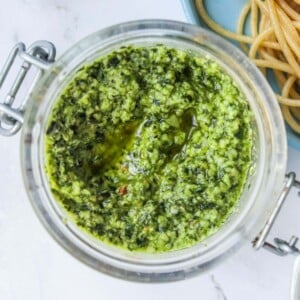
Low Calorie Pesto
Special Equipment
Ingredients
- 2 cups fresh spinach leaves
- 1 cup fresh basil leaves
- ¼ cup pine nuts
- ¼ cup grated parmesan cheese
- 2 cloves garlic minced
- 2 tablespoons lemon juice
- 2 tablespoons water
- 2 tablespoons olive oil
- Salt and pepper, to taste
Instructions
- Wash the spinach and basil leaves thoroughly and pat them dry with a paper towel.
- In a dry skillet over medium-low heat, toast the pine nuts until they are lightly golden. Be careful not to burn them; stir frequently. Remove from heat and set aside to cool.
- In a food processor or blender, combine the spinach, basil, toasted pine nuts, grated parmesan cheese, minced garlic, and lemon juice. Pulse a few times to start breaking down the ingredients.
- While the blender or food processor is running, slowly drizzle in the water and olive oil.
- Add a pinch of salt and a dash of black pepper. Remember that the Parmesan cheese already adds some saltiness, so adjust to your taste.
- Continue blending until the mixture reaches your desired consistency. If you prefer a smoother pesto, blend for a longer time. If you like it chunkier, pulse a few more times.
Notes
- Use the freshest ingredients available. Fresh basil from basil plants and spinach will give a brighter and more vibrant pesto.
- After blending, taste the pesto and adjust the seasoning as needed. You can add different herbs as well.
- Pesto is flavorful, so you don't need a large amount to add a punch of taste to your dishes.
- Storing: Transfer the pesto to an airtight mason jar. To prevent browning, place a piece of plastic wrap directly on the surface of the pesto. Store the container in the refrigerator for about 5-7 days.
- Freezing: Divide the pesto into small containers that you're likely to use in one go. Ice cube trays work well as does an airtight container. Once the portions are solid, you can transfer them to a freezer bag for up to 3-6 months.
Nutrition
All nutritional information is based on third-party calculations and should be considered estimates. Actual nutritional content will vary with brands used, measuring methods, portion sizes and more.






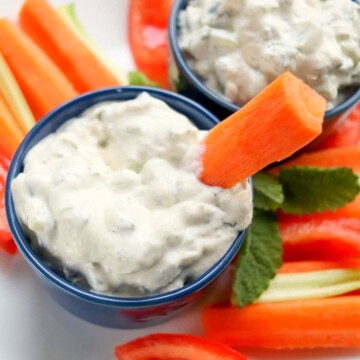
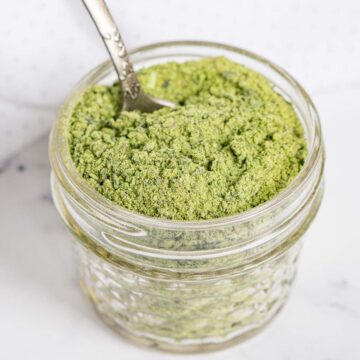
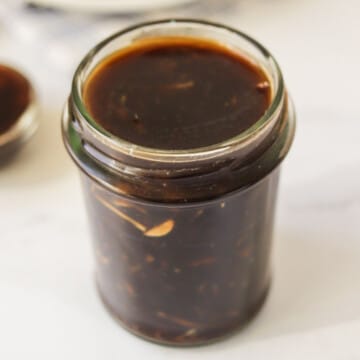
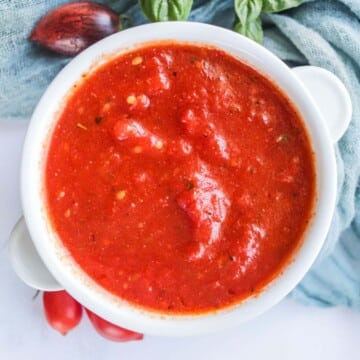

Comments
No Comments